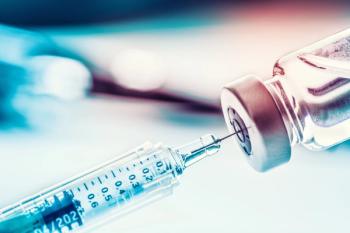
"HPV Vaccine for My Son? Not so Fast..."
The mother of a 12-year-old boy resists your suggestion that he receive the HPV4 vaccine today. She asks three good questions. Do you know the answers?
You are seeing a 12-year-old boy in your office for a sports physical. You note that he has not yet received the Advisory Committee on Immunization Practices’ (ACIP)-recommended Tdap, menningococcal conjugate, and HPV vaccines.
You discuss each of these with the boy’s mother and tell her you agree with the experts that her son should receive all three. Mom then tells you she is fine with him receiving the first two, but she wants a little more information on the HPV4 vaccine (Gardasil).
Question 1
She asks you what percentage of males actually get the vaccine in the United States. You are aware that some data exist suggesting that parents are more likely to agree to a vaccination if they feel like that’s the norm. You resist the temptation to lie to her by saying “everyone gets it.”
Instead you tell her that in 2013 the percentage of males between the ages of 13 and 17 years who had received at least one dose of the vaccine was:
A. 5%
B. 8%
C. 21%
D. 35%
Answer, discussion, and next question on
Feel free to leave a comment first.
Answer
D. In 2013, 35% of males between the ages of 13 and 17 years had received at least one dose of the vaccine.
In 2011, the percentage was 8%; in 2012, 21%; and in 2013 it was 35%. The ACIP made the recommendation to routinely vaccinate males in 2011 so the trend is moving in the right direction, but there is still a lot of room for improvement. Females have a higher rate of vaccination, as you might suspect for a vaccine heavily marketed to help prevent cervical cancer. In 2013, 57% of females between ages 13 and 17 years had received at least one dose.
Question 2
Mom then asks you if the only benefit of HPV vaccine to her son will be the reduction in risk of contracting genital warts. Out of the corner of your eye, you see the 12-year-old dying a slow death at the mention of genital warts.
You tell her that the package insert (PI) says that the vaccine can reduce the risk of the following cancers caused by HPV types 16 or 18 (more than one answer may be correct):
A. Anal cancer
B. Penile cancer
C. Oropharyngeal cancers
Answer, discussion, and next question on
Feel free to leave a comment first.
Answer
A. Anal cancer
While HPV types 16 and 18 are thought to cause some, but not all, anal, penile, and oropharyngeal cancers, only the prevention of anal cancer is listed in the PI. It makes sense, but has not been shown in studies, that Gardasil would most likely reduce the risk of the other cancers as well.
Question 3
You tell mom that the incidence of orophayyngeal cancers has been on a steady increase since the 1970s and that 80% of these cancers are in males. Mom saw on the Gardasil vaccination information sheet that about 12,000 new cases of cervical cancer are diagnosed yearly. She asks how many oropharygeal cancers are diagnosed in males and what percentage of them are caused by HPV type 16, one of the strains in the vaccine.
You tell her:
A. 800 and 88%
B. 3,500 and 74%
C. 7,200 and 61%
D. 12,300 and 74%
Answer and discussion on
Feel free to leave a comment first.
Answer
C. 7,200 new cases of oropharyngeal cancers are diagnosed and 61% are caused by HVP type 16.
So, about 4,000 new cases of oropharygeal cancers in males caused by HPV type 16 occur every year. A smaller number will result from an HPV type 18 infection. At the rate at which orophayrngeal cancers are increasing, some experts are opining that in a decade or two, more males will be dying of HPV cancers than females. Keep in mind that no data exist to suggest any reduction in cancer rates in any male cancers other than anal. And, to be honest, these data are based on a reduction in precancerous lesions, just like the indication for the prevention of cervical cancer is based on the reduction of precancerous cervical lesions.
Was this quiz helpful? What other vaccine topics would you be interested in? Please let us know.
References:
Markowitz LE, Dunne EF, Saraiya M, et al.; Centers for Disease Control and Prevention (CDC).
Newsletter
Access practical, evidence-based guidance to support better care for our youngest patients. Join our email list for the latest clinical updates.









